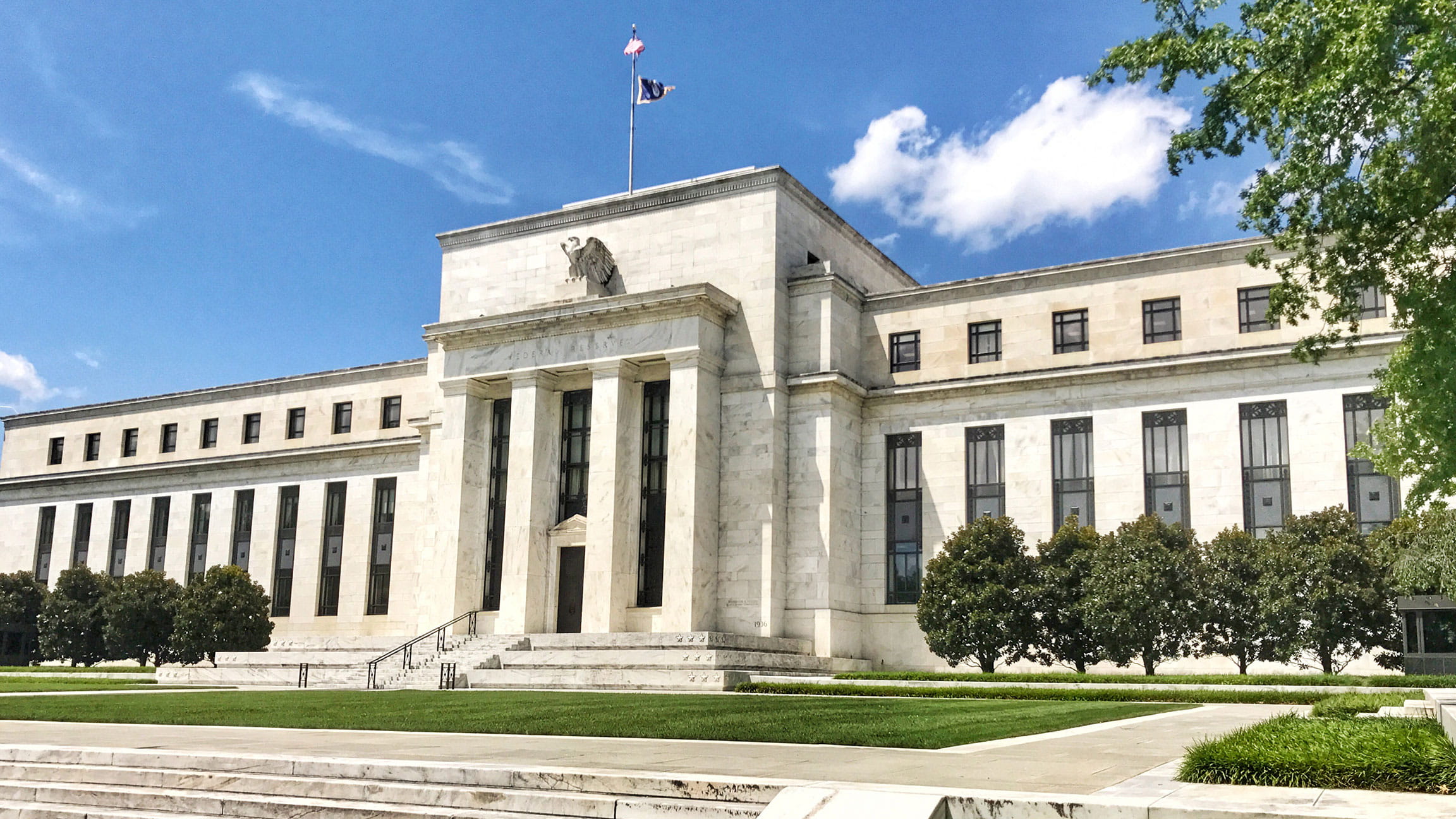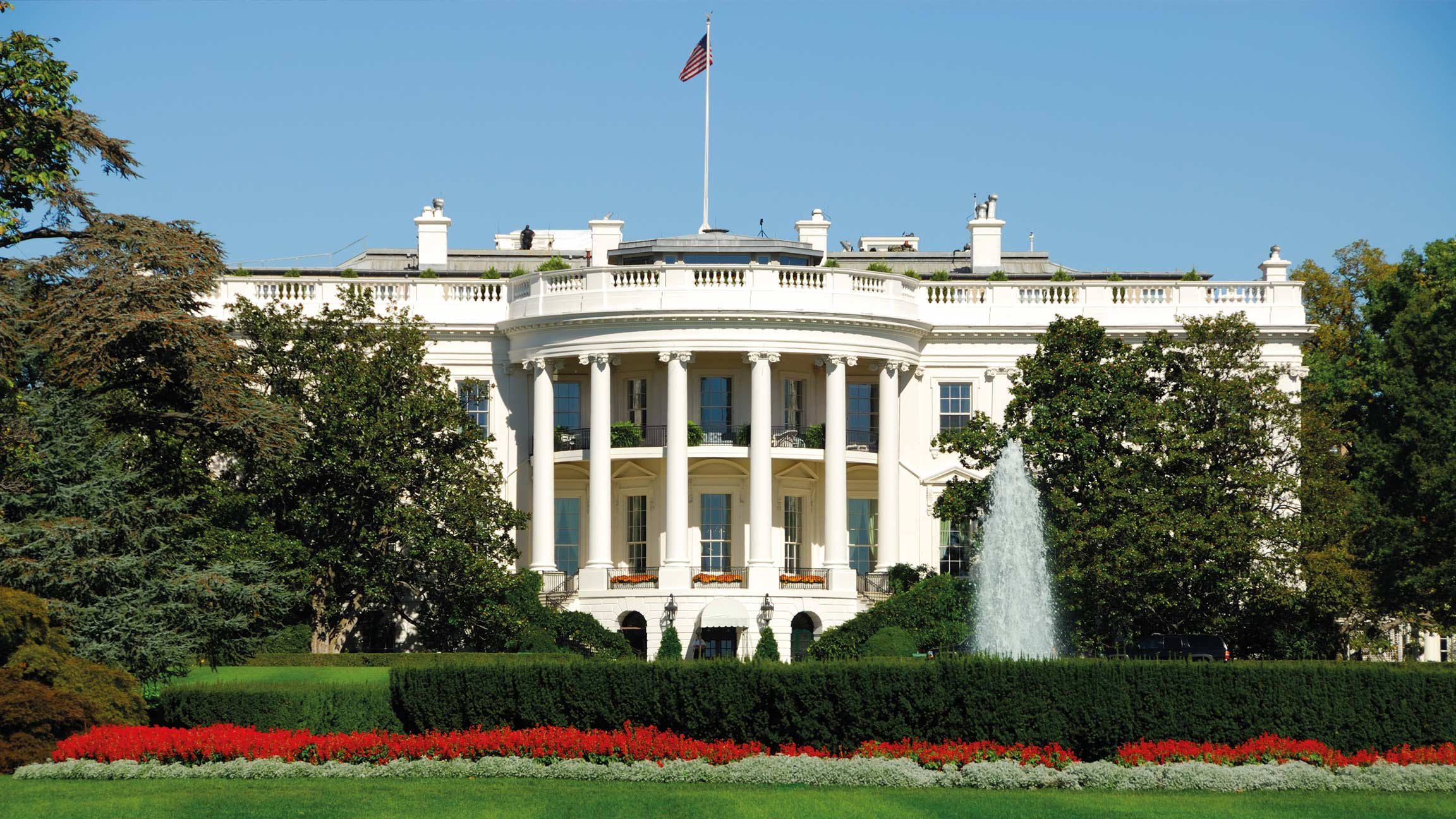Kommentar von Franck Dixmier, im Vorfeld der Fed-Sitzung am 7. und 8. November 2018

Zusammenfassung
Die robuste wirtschaftliche Verfassung der USA hält die US-Notenbank auf Kurs. Wir erwarten, dass die Fed trotz politischen Drucks und der in letzter Zeit zunehmenden Risikoaversion an den Finanzmärkten die Normalisierung ihrer Geldpolitik fortsetzen wird.
Fed bleibt auf Kurs, trotz volatiler Märkte und politischen Drucks
Die robuste wirtschaftliche Verfassung der USA hält die US-Notenbank auf Kurs. Wir erwarten, dass die Fed trotz politischen Drucks und der in letzter Zeit zunehmenden Risikoaversion an den Finanzmärkten die Normalisierung ihrer Geldpolitik fortsetzen wird.
Das Protokoll der letzten Fed-Sitzung vom 25. und 26. September ist diesbezüglich aufschlussreich. Es zeigt, dass die Fed zuversichtlich und optimistisch hinsichtlich der Wachstumsaussichten für die US-Wirtschaft bleibt – insbesondere aufgrund der Erwartung, dass die meisten der von Zöllen betroffenen Unternehmen die Preiserhöhungen auf die privaten Haushalte zu überwälzen können. Das Protokoll zeigt darüber hinaus, dass die letzte Zinserhöhung einstimmig verabschiedet wurde und die Mehrheit der Fed-Mitglieder sich dafür ausspricht, letztlich über den neutralen Zinssatz hinauszugehen. Schätzungen zufolge liegt die neutrale Rate – also das Zinsniveau, das das Wirtschaftswachstum weder stimuliert noch hemmt – bei 2,5 bis 3 Prozent.
Daher ist die Botschaft der Fed klar, und die Märkte haben sie verstanden. Der Beweis: Es gab keinerlei Anpassungen der Zinserhöhungserwartungen. Die Finanzmärkte rechnen weiterhin bis Ende 2019 mit drei Leitzinserhöhungen. Und dies, obwohl angesichts des schwächeren Wachstums in China, der Befürchtungen hinsichtlich des Brexit und Italiens, geopolitischer Spannungen und der Zunahme protektionistischer Tendenzen die Risikoaversion gestiegen ist. All dies hat zu einem Anstieg der Volatilität an den Aktienmärkten beigetragen.
Die Zuversicht der Fed beruht auf Wirtschaftsdaten, die auf eine robuste wirtschaftliche Verfassung in den Vereinigten Staaten hindeuten:
- im dritten Quartal wuchs die US-Wirtschaft mit einer jährlichen Wachstumsrate von 3,5 Prozent; dies ist zwar gegenüber der Rate von 4,2 Prozent im zweiten Quartal ein Rückgang, liegt aber weiter deutlich über der Potenzialrate
- das Wachstum wurde durch den privaten Konsum getrieben, der im siebten Monat in Folge zulegte (mit einer annualisierten Rate von 4 Prozent) – eine direkte Folge der Steuersenkungen von Präsident Donald Trump
- der von der Fed favorisierte Inflationsindikator blieb im fünften Monat in Folge stabil bei 2 Prozent, da ein Anstieg der Güterpreise und Löhne durch eine Abschwächung bei den Immobilienpreisen kompensiert wird.
All dies deutet darauf hin, dass die US-Wirtschaft ordentlich in Fahrt ist, was wiederum die Fed in ihrer Absicht bestärkt, den geldpolitischen Stimulus zu stoppen und über den neutralen Zinssatz hinauszugehen. Die nächste Zinserhöhung dürfte während der Fed-Sitzung am 18. und 19. Dezember anstehen – das wäre der vierte Schritt im Jahr 2018. Für 2019 erwarten wir erwarten zwei weitere Zinsanhebungen.
Die Fed wird ihre Pläne zur Zinserhöhung jedoch nicht auf Autopilot setzen und sich die Flexibilität zur Kursänderung erhalten, falls die Konjunktur dreht. Die Notenbank wird daher pragmatisch bleiben und losgelöst von politischem Druck die Entwicklung der Wirtschaftsdaten im Auge behalten.
Comments from Franck Dixmier, Global Head of Fixed Income, ahead of the FOMC meeting on 7-8 November 2018
Volatile markets and politics won’t change the Fed’s path
The strong economic foundation in the US continues to validate the Fed’s trajectory, despite the increased risk-aversion recently seen in the markets. As a result, we expect the FOMC to stay on its path, free from political pressure, and continue monetary-policy normalisation.
At this stage, we do not expect the recent increase in risk-aversion and stock market volatility to deflect the US Federal Reserve from its path. The minutes of the Federal Open Market Committee’s 25-26 September meeting are particularly enlightening on this point. The Fed remains confident and optimistic about the growth prospects for the US economy – particularly the ability of most of the firms affected by tariffs to transfer those price increases to households. The minutes also show that the last rate hike was unanimously passed, and that the majority of the committee members favoured going beyond the neutral rate – the interest-rate level that neither stimulates nor restrains economic growth. Estimates for the neutral rate currently range from 2.5% to 3%.
As a result, the message from the Fed is clear and the markets have understood it. As proof, the markets have not revised their rate-hike expectations and still anticipate three increases by the end of 2019. This view has taken root despite an increase in risk-aversion in the face of slower growth in China, fears about Brexit and Italy’s fiscal trajectory, geopolitical tensions and the rise of protectionism – all of which have contributed to high volatility in equity markets.
The Fed’s confidence is based on economic data that demonstrate the strength of economic activity in the United States:
- in the third quarter, the US economy grew at a 3.5% annual growth rate – a dip from the second quarter’s 4.2% rate, but still well above its potential
- this growth was driven by consumer spending, which rose for the seventh consecutive month (at a 4% annualized rate) and was a direct consequence of President Donald Trump’s tax cuts
- core PCE – the inflation indicator favoured by the Fed, which measures personal consumption expenditures – remained stable at 2% for the fifth consecutive month. An increase in prices and wages are being offset by a slowdown in real-estate prices.
This convergence of economic activity clearly indicates a US economy that is rolling along and validates the Fed’s willingness to stop the monetary stimulus and go beyond the neutral rate. As a result, we expect the FOMC to stay on its path, free from political pressure, and continue monetary-policy normalisation. We therefore expect a rate hike to be announced at the Fed’s 18-19 December meeting, for a total of four increases in 2018. We also expect two further hikes in 2019.
It is important to note, however, that the Fed will not put its rate-hike plans on autopilot. The central bank wants to find room to manoeuvre in case the US economy reaches its inflexion point. But the FOMC will be pragmatic and keep an eye on the evolution of economic data, in total independence from political pressure.
Kommentar von US-Strategist Mona Mahajan zu den US-Wahlen

Zusammenfassung
Keine großen Überraschungen – GRIDLOCK scheint sich durchgesetzt zu haben








